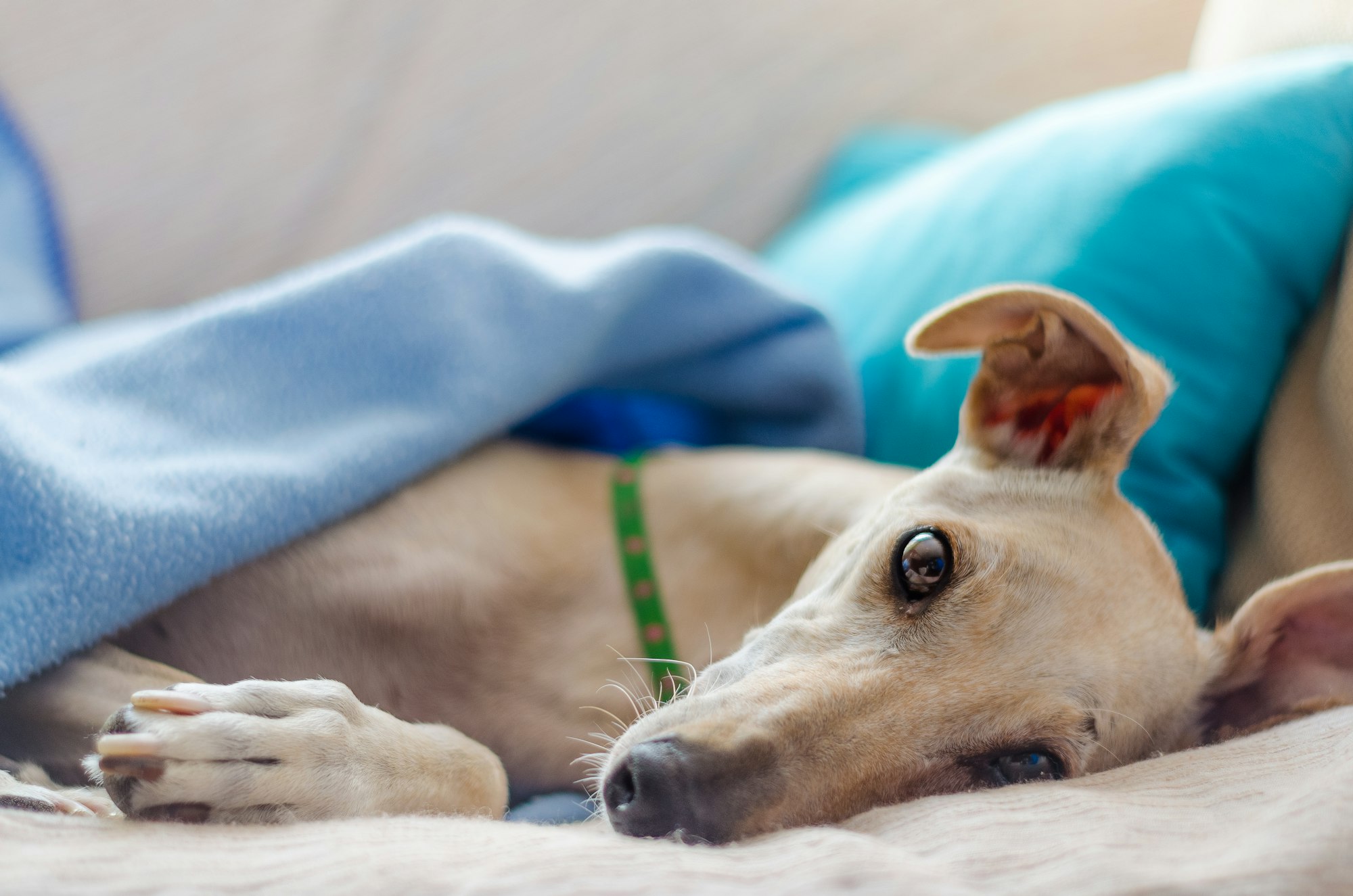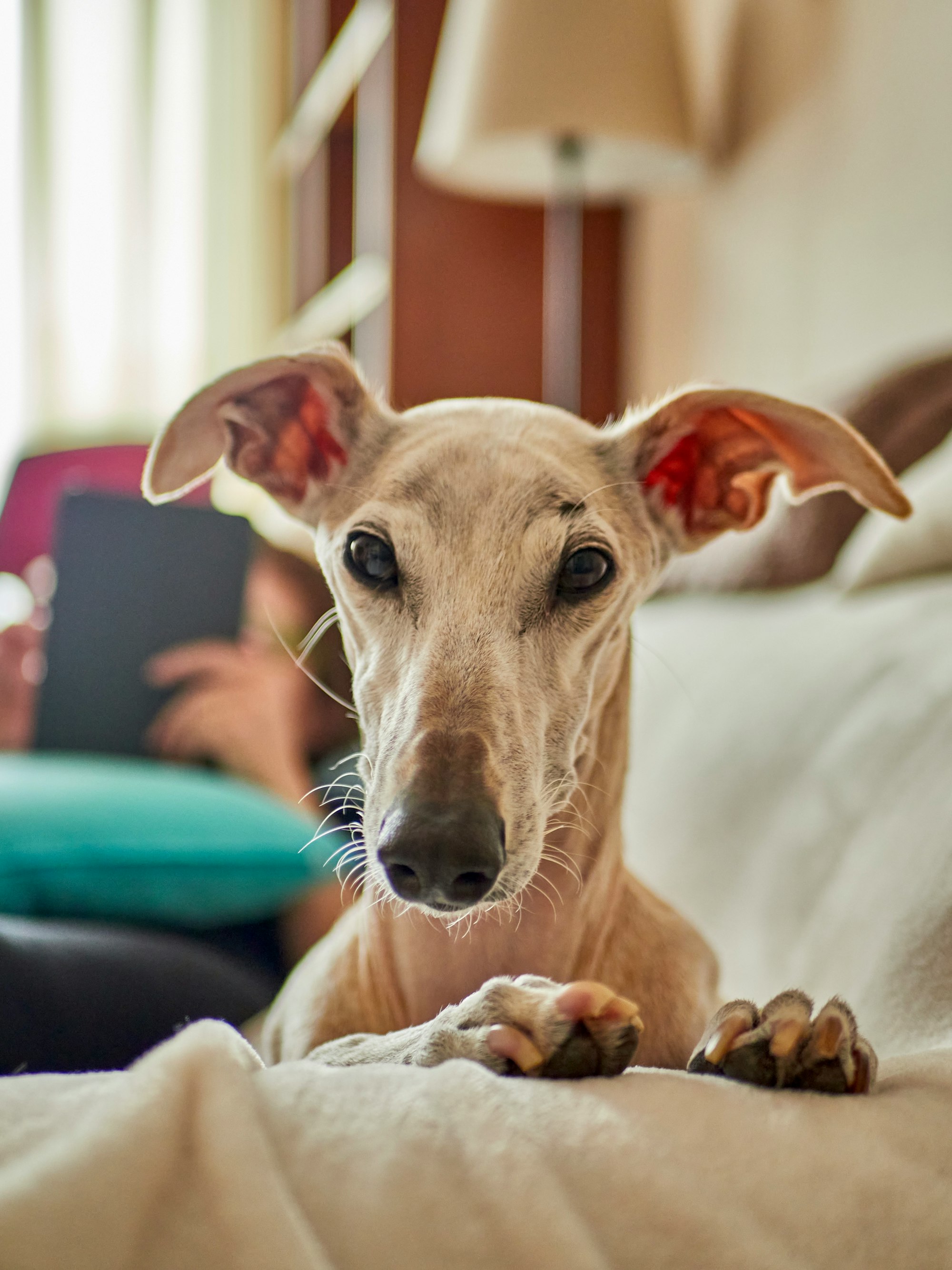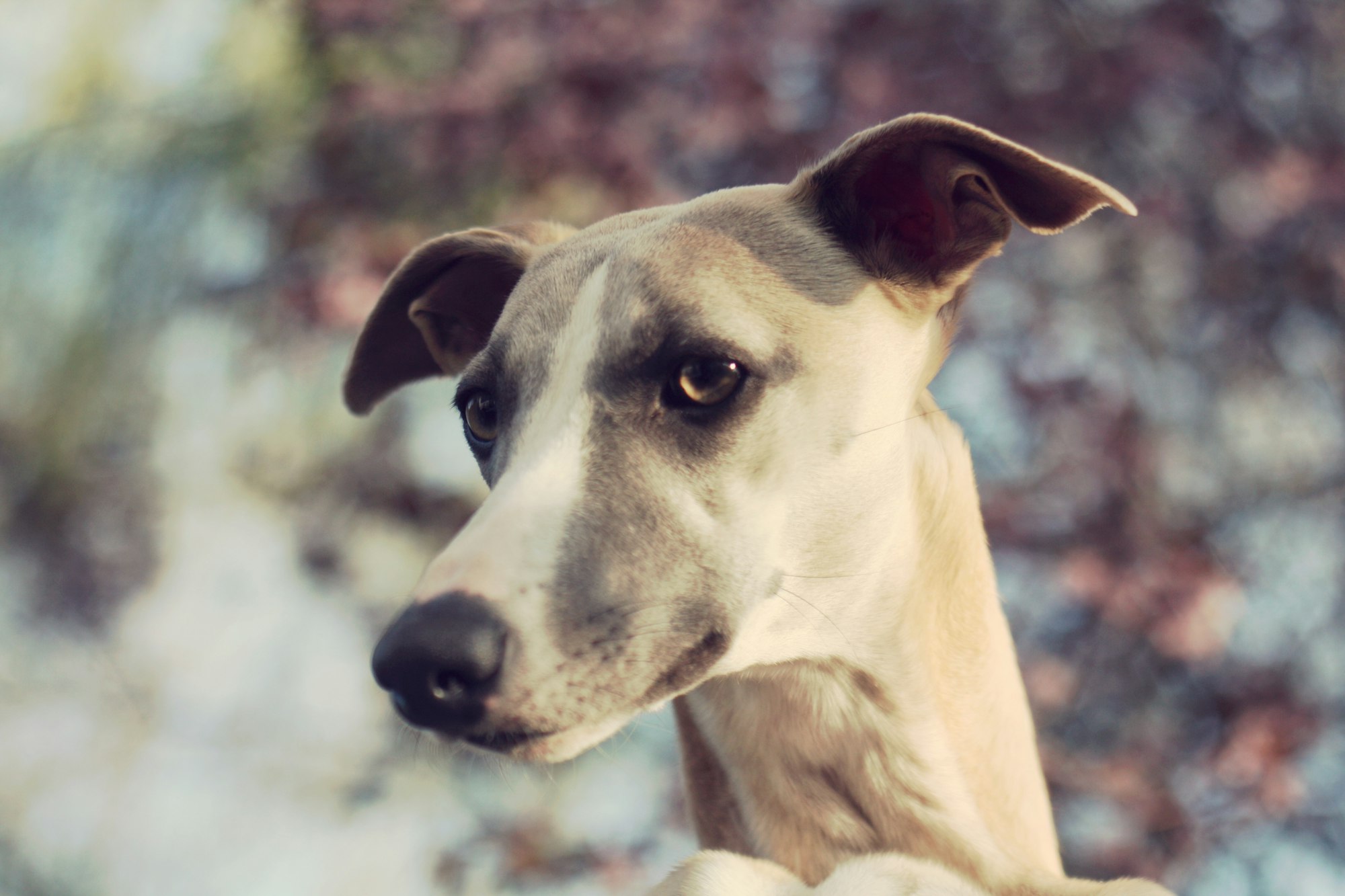The Italian Greyhound, a breed of grace and elegance, has captured the hearts of dog enthusiasts with its delicate appearance and charming personality. Often referred to as the "IG," this slender and agile breed is a true sight to behold. In this comprehensive guide, we will delve into the captivating world of the Italian Greyhound, exploring its historical origins, unique physical characteristics, endearing temperament, exercise needs, grooming essentials, training considerations, health considerations, social interactions, and more.

Italian Greyhound Introduction
The Italian Greyhound is a breed that exudes elegance in every aspect. With its sleek and slender build, this miniature greyhound is often likened to a work of art in motion. But beyond its visual appeal lies a rich history and a personality that is both endearing and captivating.
Historical Origins and Development
Originating in ancient Egypt over two thousand years ago, the Italian Greyhound was adored by nobility and aristocracy throughout history. Revered for its graceful form and gentle nature, this breed has retained its charm over the centuries. From royal courts to modern homes, the Italian Greyhound continues to leave a lasting impression.
Physical Characteristics: A Delicate Marvel
The Italian Greyhound's physical attributes are a testament to its delicate beauty. Here's a closer look at the features that make this breed a marvel:
- Graceful Build: The Italian Greyhound boasts a slender and lithe body, accentuated by fine bones and graceful proportions.
- Sleek Coat: Their short and smooth coat comes in various dog coat colors and patterns, adding to their visual allure.
- Expressive Eyes: Large, dark eyes radiate warmth and curiosity, reflecting the IG's gentle nature.
- Elegant Neck: A long and slender neck enhances the breed's elegance, complementing its overall appearance.
- Alert Ears: Semi-erect ears, often referred to as "rose ears," give the IG a distinctive and charming look.
Weight and Height of the Italian Greyhound
The Italian Greyhound is a delicate and slender breed, known for its graceful appearance. Here's an overview of their typical weight and height range:
Weight:
- Adult Male Italian Greyhounds usually weigh between 6 to 10 pounds (2.7 to 4.5 kg).
- Adult Female Italian Greyhounds typically weigh around 5 to 8 pounds (2.3 to 3.6 kg).
Height:
- Adult Male Italian Greyhounds stand approximately 13 to 15 inches (33 to 38 cm) tall at the shoulder.
- Adult Female Italian Greyhounds have a similar height range, typically around 12 to 14 inches (30 to 36 cm).
These ranges provide a general idea of the Italian Greyhound's size, but individual dogs may vary slightly. Due to their petite build, Italian Greyhounds are well-suited for indoor living and make wonderful companions for those seeking a smaller canine friend.

The Italian Greyhound's Gentle and Affectionate Temperament
Beneath its delicate exterior, the Italian Greyhound possesses a heartwarming and affectionate temperament. Here's an exploration of their unique personality traits:
- Loyal Companionship: Italian Greyhounds form strong bonds with their human companions, seeking closeness and comfort.
- Gentle Demeanor: Known for their gentle and sensitive nature, IGs are well-suited for families and individuals alike.
- Playful Spirit: Despite their elegant appearance, Italian Greyhounds have a playful and mischievous side, often engaging in bursts of joyful energy.
- Social Butterflies: IGs generally get along well with other dogs and can form strong friendships within a pack.
- Quiet Elegance: While they may not be as vocal as some breeds, Italian Greyhounds are known to express themselves through subtle gestures and affectionate behaviors.
Exercise Needs and Activities for a Happy IG
Providing proper exercise and mental stimulation is essential for the well-being of your Italian Greyhound. Here's a guide to meeting their activity requirements:
- Daily Walks: Regular walks are crucial for maintaining physical health and mental stimulation. Aim for at least two short walks per day.
- Playtime: Engage in interactive play sessions that allow your IG to chase interactive dog toys, play fetch, or engage in gentle tug-of-war games.
- Indoor Activities: Italian Greyhounds are well-suited for indoor living, but ensure they have enough space to move around freely.
- Dog Sports: Consider participating in activities such as agility, lure coursing, or obedience training to engage their minds and bodies.
- Mind Games: Stimulate your IG's intellect with puzzle toys, treat-dispensing gadgets, and other brain-teasing activities.
Grooming and Care for the Elegant Coat
Maintaining the Italian Greyhound's coat is relatively simple, but it still requires regular care. Here's a stepwise approach to grooming your elegant companion:
- Brushing: While their coat is short, occasional brushing helps remove loose hair and keeps the skin healthy.
- Bathing: Bathe your IG as needed, typically every few months or when they get dirty. Use a mild dog shampoo.
- Nail Trimming: Regularly trim your Italian Greyhound's nails to prevent overgrowth, which can lead to discomfort and issues with movement.
- Ear Cleaning: Check their ears regularly and clean them as needed to prevent infections.
- Dental Care: Brush their teeth regularly to maintain good oral health and prevent dental issues.
Training Tips for Your Italian Greyhound
Training your Italian Greyhound can be a rewarding experience. Here are steps to ensure effective and positive training sessions:
- Positive Reinforcement: Use treats, praise, and affection to reward desired behaviors, as IGs respond well to positive reinforcement.
- Start Early: Begin training and socialization during puppyhood to establish good behavior habits.
- Consistency: Be consistent in your commands and expectations to prevent confusion and ensure steady progress.
- Patience: Italian Greyhounds are sensitive and may take time to learn new commands. Patience and understanding are key.
- Socialization: Expose your IG to various people, places, and situations to ensure they grow up to be well-adjusted adults.
Health Considerations for a Thriving Italian Greyhound
Maintaining your Italian Greyhound's health is vital for a happy and active life. Here's a stepwise approach to ensuring their well-being:
- Regular Vet Visits: Schedule routine check-ups to monitor your IG's health and catch any potential issues early.
- Vaccinations and Preventatives: Stay up-to-date with vaccinations, flea, tick, and heartworm preventatives as recommended by your veterinarian.
- Balanced Diet: Feed your Italian Greyhound a high-quality, well-balanced diet appropriate for their age, size, and activity level.
- Weight Management: Monitor their weight and body condition to prevent obesity, which can lead to various health problems.
- Exercise: Provide regular exercise to maintain muscle tone, joint health, and overall fitness.
Socializing Your Italian Greyhound: Building Canine Connections
Socialization plays a crucial role in shaping your Italian Greyhound's behavior and temperament. Here's a stepwise guide to fostering positive interactions:
- Puppy Socialization: Begin socializing your IG puppy early, exposing them to different people, animals, sounds, and environments.
- Positive Experiences: Ensure that interactions are positive and rewarding, using treats and praise to reinforce good behavior.
- Doggy Playdates: Arrange playdates with well-mannered dogs to promote healthy social interactions.
- Ongoing Socialization: Continue exposing your Italian Greyhound to new experiences throughout their life to prevent fear or separation anxiety.
- Training Classes: Enroll your IG in puppy or basic obedience classes to enhance their social skills and build a strong bond with you.
Italian Greyhounds as Indoor Companions
The Italian Greyhound's adaptability makes them well-suited for indoor living. Here's a look at their role as beloved indoor companions:
- Apartment-Friendly: Italian Greyhounds can thrive in apartments or homes with limited outdoor space, as long as they receive regular exercise.
- Couch Cuddlers: IGs are known for their love of comfort and warmth. They'll eagerly snuggle up with you on the couch.
- Quiet Demeanor: While they may have bursts of energy, Italian Greyhounds are generally quiet and well-mannered indoors.
- Low Grooming Demands: Their short coat means less shedding and less maintenance compared to some other breeds.
- Close Bonding: Italian Greyhounds enjoy close proximity to their human companions and will seek out opportunities for cuddling.
Common Misconceptions about Italian Greyhounds
Clarifying misconceptions is essential for a better understanding of Italian Greyhounds. Here's a stepwise exploration of some common misunderstandings:
- Fragile Nature: While delicate in appearance, Italian Greyhounds are not overly fragile and can adapt well to daily activities.
- High Exercise Needs: While they enjoy play and short bursts of energy, Italian Greyhounds have moderate exercise needs compared to some other breeds.
- Not Suitable for Families: IGs can make wonderful family companions, provided children are taught to handle them gently.
- Prone to Cold: Their short coat might suggest vulnerability to cold, but they are sensitive to temperature and should be provided appropriate protection.
- Difficult to Train: With the right approach, Italian Greyhounds can be trained effectively. They respond well to positive reinforcement.
Health Concerns in Italian Greyhounds

While Italian Greyhounds are generally a healthy breed, like all dogs, they can be susceptible to certain health issues. It's important for potential owners to be aware of these concerns and to work closely with a veterinarian to ensure their Italian Greyhound's well-being. Here are some common health concerns associated with the breed:
- Dental Health: Italian Greyhounds may be prone to dental problems such as gum disease and tooth decay. Regular dental care, including brushing their teeth and providing dental treats, can help maintain good oral health.
- Luxating Patella: This condition involves the displacement of the kneecap, which can lead to lameness and discomfort. Regular exercise and maintaining a healthy weight can help reduce the risk of luxating patella.
- Hypothyroidism: Some Italian Greyhounds may develop an underactive thyroid gland, which can lead to weight gain, lethargy, and skin issues. Regular veterinary check-ups and thyroid hormone testing can help monitor and manage this condition.
- Epilepsy: Epilepsy, characterized by recurring seizures, can affect Italian Greyhounds. If your dog shows any signs of seizures, it's crucial to consult a veterinarian for proper diagnosis and management.
- Legg-Calvé-Perthes Disease: This condition affects the hip joint and can lead to pain and lameness. Surgical intervention may be necessary to address severe cases.
- Allergies: Italian Greyhounds can develop allergies to various environmental factors, including pollen, dust, and certain foods. Watch for signs of itching, redness, or skin irritation, and work with a vet to identify and manage allergies.
- Osteoporosis: Due to their lean build, Italian Greyhounds may be at risk for bone-related issues, including fractures and osteoporosis. Providing a balanced diet rich in calcium and regular exercise can help support their bone health.
- Eye Conditions: Some Italian Greyhounds may be prone to eye issues such as cataracts, progressive retinal atrophy (PRA), and corneal ulcers. Regular eye check-ups can help catch and address these problems early.
It's important to note that responsible breeding practices can significantly reduce the risk of hereditary health issues in Italian Greyhounds. If you're considering bringing an Italian Greyhound into your family, choose a reputable breeder who conducts health screenings on their breeding dogs and prioritizes the well-being of the puppies.
Average Price of an Italian Greyhound
The cost of acquiring an Italian Greyhound can vary based on several factors, including the breeder's reputation, location, pedigree, and whether the dog is intended for pet or show purposes. On average, you can expect to pay between $1,000 to $2,500 for a pet-quality Italian Greyhound puppy.
It's important to note that the initial purchase price is just one aspect of the expenses associated with owning a dog. Ongoing costs such as veterinary care, grooming, dog food, training, and other essentials should also be taken into consideration.
When considering bringing an Italian Greyhound into your family, it's advisable to research and find a reputable breeder or consider adopting from a rescue organization. Responsible breeders prioritize the health and well-being of their dogs, ensuring you're providing a loving and caring home for a well-bred Italian Greyhound.
Conclusion
In conclusion, the Italian Greyhound is a remarkable breed that combines elegance, affection, and a playful spirit. Their presence enriches our lives and homes with beauty and charm. Whether curling up indoors or bounding through outdoor adventures, the Italian Greyhound embodies grace and companionship.
FAQs
Q1. Are Italian Greyhounds good with children?
Italian Greyhounds can be good with well-behaved children, but supervision and teaching proper handling are important.
Q2. Do Italian Greyhounds require extensive exercise?
While they have bursts of energy, Italian Greyhounds have moderate exercise needs compared to some other breeds.
Q3. Are Italian Greyhounds hypoallergenic?
No, they are not considered hypoallergenic, but their short coat may produce fewer allergens than longer coats.
Q4. Are Italian Greyhounds prone to health issues?
Like all breeds, they can have certain health concerns. Responsible breeding and regular veterinary care can minimize risks.
Q5. What is the lifespan of an Italian Greyhound?
Italian Greyhounds typically live around 12 to 15 years when well cared for.